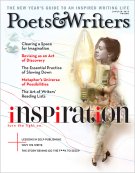Much as my inner technophobe hates to admit it, we’ve gotten to the point where the Internet is something we can’t live without. It’s the reason I can make a living as a freelance writer while living in Minneapolis. It’s why I can sit here and research everything from particle physics to particleboard while communicating with people from all over the world. It’s how I can watch endless hours of stupid YouTube videos, instead of having to wait for something decent on HBO.
Not long ago, however, I started to have a feeling that I couldn’t quite shake. I started falling behind on projects and was never turning assignments in on time. I would sit down to research something, and it would take me three times as long as I’d planned. I couldn’t focus. I started to feel overwhelmed, less and less able to control what I thought about. Online I would get a bizarre, Internet-induced amnesia, totally forgetting whatever I’d gone online for. I even wrote about the importance of getting offline, but found I was less and less able to simply do that.
There were many possible reasons for this. It could have been because my wife and I had two small children I could (often) hear screaming from my home office. It could have been because the economy was on an express train into the tank and I was the sole breadwinner, on just a sputtering freelance income.
But there have always been things to be overwhelmed by. This felt different. I felt fragmented inside. It was like trying to bushwhack through a jungle full of Natalie Goldberg’s monkey minds. In Creativity, Csikszentmihalyi identified four major obstacles that keep people from creative accomplishment: psychic exhaustion, easy distraction, inability to protect/channel creative energy, and not knowing what to do with that energy.
The Internet was not helping me on any of those fronts. This may have been because of tension between the two traits many creative people have: openness and curiosity on the one hand, and an “obsessive perseverance,” as Csikszentmihalyi puts it, on the other. Online, I would stay in open and curious mode for far too long, and it was getting harder to transition to the ruthless single-mindedness I needed to get anything done.
Yet those two qualities may not be as paradoxical as they seem. Both are ways of controlling one’s attention—opening and narrowing it as needed. And the ability to control one’s attention is perhaps the single most important quality of the creative mind. I, on the other hand, felt I was living in a constant state of what researcher Linda Stone calls “continuous partial attention,” never fully tuned in to anything, but always partially tuned in to everything.
A big part of being a successful writer is and has always been the ability to push everything else aside to do your work. There’s an old story about Gustave Flaubert who, one Friday in the mid-1800s, was sitting at his desk when some friends stopped by and asked if he wanted to join them for a weekend outing. Flaubert said he couldn’t because he had too much work to do. When his friends got back from their trip and asked what he’d written, they saw he was still in the same place—in midsentence, ending with a comma. Flaubert, however, was extremely happy with his “wonderful progress.” On Saturday, he said, he’d changed the comma to a semicolon. On Sunday he’d put the comma back.
Needless to say, times have changed. Yet it’s hard to imagine we’d still be reading Flaubert if he’d spent the whole weekend toggling back and forth between Gawker and Facebook. While he made hard choices for his craft, there was another struggle he didn’t have to make: Distractions were not emerging from the very paper he wrote on, interrupting his work, short-circuiting his focus, trying to turn his precious attention into page views.
Choosing what you pay attention to isn’t as easy as it was then, and there is a biological basis for this: We actually have two different attention systems that work at cross-purposes in our minds. One is the “top-down” executive attention of which we are in charge. That is the system we use when we focus and push ourselves forward toward some goal: reading a book, writing a draft, learning a skill, accomplishing a task. The other is a “bottom-up” system, driven primarily by external stimuli—distractions, things that catch our eye: the tiger stalking, a car approaching, the dancing woman on the real estate ad.
These two systems exist in different parts of our brains, and the bottom-up system actually has a circuit-breaker effect on the top-down system. Sitting in front of my computer, I could feel these two pulling me in opposite directions—or, more accurately, I could feel my top-down system being swamped by distraction from the bottom. It was “completely overwhelming,” as David Foster Wallace described it in a conversation with David Lipsky, which is recorded in Although of Course You End Up Becoming Yourself: A Road Trip With David Foster Wallace (Broadway Books, 2010). “There are four trillion bits coming at you, 99 percent of them are shit, and it’s too much work to do triage to decide.”
Quite possibly I was just lacking the willpower to function in the modern world. But I wasn’t ready to give up yet. I knew I had to do something to try to balance the public and the private spaces, to protect the place Lessing says inspiration comes from, to get out of what novelist and travel writer Pico Iyer calls the “cathedral of distraction” and back into that “place of stillness that allows you to hear yourself think, to come to decisions you trust and to cut through all the clutter and complication of the everyday to see what matters and what will last.”









